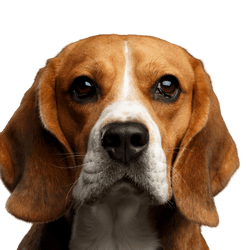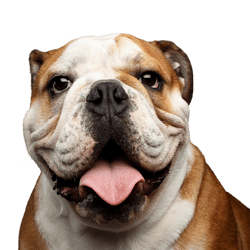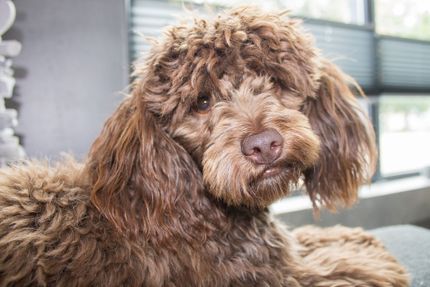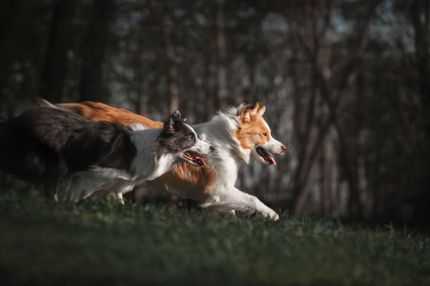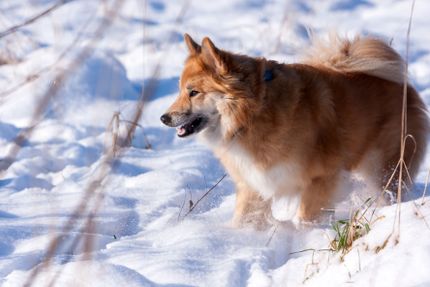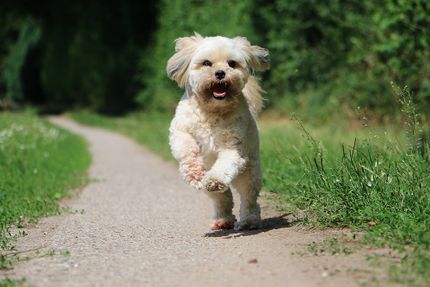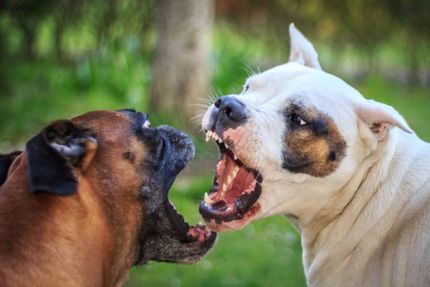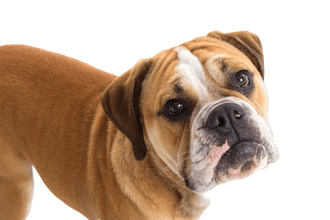
Buggle:Beagle and English Bulldog Mix
Buggle
Facts & Origin
The Buggle or Beabull,
... it is a cross between Beagle and English Bulldog, is a so-called designer dog that can be yellow-red, red, bi- or tricolour. The origins of this cross, as with most designer dogs, are unclear. It is believed that Buggle breeders in the United States began breeding the very popular parent breeds about 20 years ago. The beagle as we know it today has been around since the 19th century, when the demand for smaller breeds was waning, but fox hunting was very popular nonetheless. The Bulldog originates in England, where it was used for bull-baiting. This required fearless animals with broad heads and shoulders and an aggressive personality.
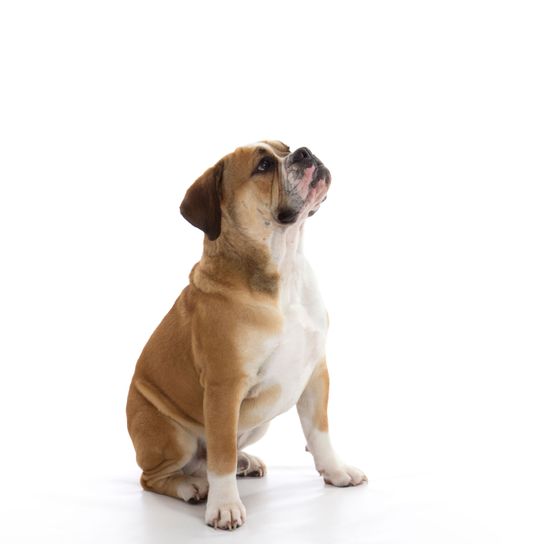
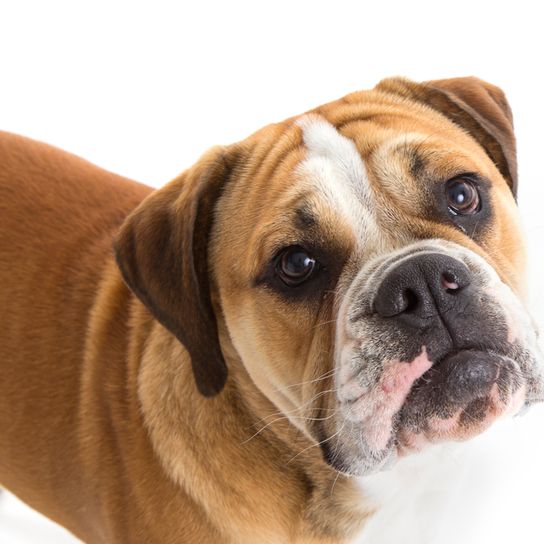

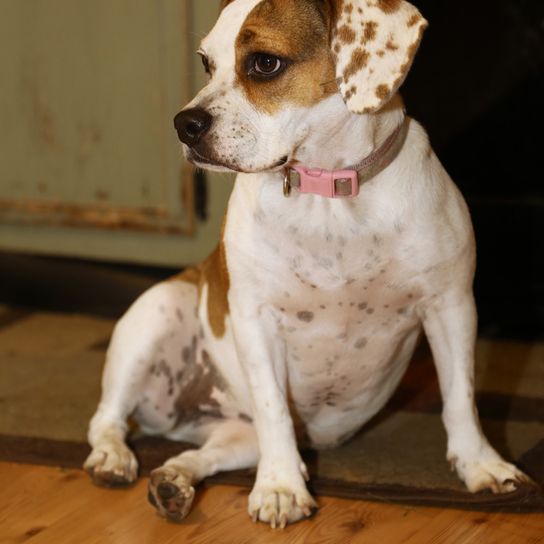
| Alternate Name | Beabull |
| Origin | UK |
| Life expectancy | 10 - 12 years |
| Care requirements | low-maintenance |
| Activity level | average - low |
| FCI group | not recognised |
| AKC group | not recognised |
| KC group | not recognised |
More Beagle mixes
More English Bulldog mixes
Attitude, character and temperament of the breed
Character of a Beagle Bulldog crossbreed
They are very family-oriented and love being in contact with children, they get along well with other dogs and usually prefer a multi-dog household. Like their Bulldog parent, they are submissive, gentle, and love playing tug-of-war or nibbling on something. They get their playfulness from the Beagle as well as their curiosity, their energy and the urge to dig and to destroy things when they are bored. Before you buy a Buggle, you should be aware of this or try not leaving them alone for a longer period of time if possible.
Character
Usage

Health and breeding information
Problems in Buggles
Because the character and build of the Beagle and the English Bulldog do not necessarily harmonise, problems can arise. The Beagle breed is very sporty and they have a strong hunting instinct, but Bulldogs are not made for sporty activities. There are also quite a few hereditary diseases of the original breeds existing.
Buggles tend to have
- Problems with their articular cartilage and
- difficulty breathing.
Both also tend to become overweight, which is why regular exercise is very important. However, make sure that the dog is not overworked or spends time outside when the weather is too hot. Swimming and climbing stairs are also not suitable, especially not for specimens with short legs. Moisture can build up in their folding ears, which can lead to infections, and the wrinkles on the rest of their body should also be regularly checked for moisture and dirt to prevent skin inflammation. Accumulated dirt can easily be removed with a cotton pad soaked in peroxide, corn starch helps it to dry faster. However, spare the areas around their eyes.
Buying a Buggle
Buggle breeders should be able to guarantee that the dog is healthy, which you can check by seeing if the animal is entered in a health database. Nevertheless, you have to be aware that health problems typical for this dog can arise and possibly prepare yourself for high veterinary bills.


Appearance and character of the Beabull
Beagles and Bulldogs are similar in size, so you can determine the Beabull's size quite well - it measures between 33 and 40 cm. Their weight is a little more difficult to determine, the average is 13 kg, but up to 20 kg are considered normal. The breeds are also similar in terms of their coat, so it is safe to say the Buggle puppy's fur will be smooth and short to medium-length. It is possible that they inherit the Beagle's thick double coat. The animals shed little to medium amounts of hair. Brushing them a few times a week is sufficient, or if they have a double coat it will be necessary to brush them every day in the season of spring. Most Buggle puppies have a short tail, a wrinkled face and stocky legs like Bulldogs, but the characteristics are not as pronounced as in the purebred animals.
- Origin: English Bulldog, Beagle
- average size: 33-40 cm
- average weight: up to 20 kg
| Fur length | short |
| Fur | flat coated |
| Ear shape | Floppy Ear |
| Tail | lang - stubby |
| Anatomy | muscular, massive, strong, hefty |
| Size ♀ | 33 - 40 cm |
| Weight ♀ | 15 - 20 kg |
| Size ♂ | 33 - 40 cm |
| Weight ♂ | 15 - 20 kg |
| Suitable For | Seniors |
Colors
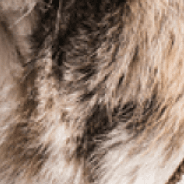

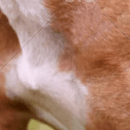
Known Diseases
Breathing problems
Dogs with shortened muzzles can often experience respiratory problems.
Joint damage
In some breeds, joint damage can occur later in life, affecting the musculoskeletal system.
Hip dysplasia (HD)
The hip dysplasia or hip joint dysplasia of the dog (HD) is a maldevelopment of the hip joint.
Useful Articles
You can find articles that might interest you in the dogbible blog to match your favorite breed.
Visit our magazineto stay up to date on dog trends.
To find out more, view our Privacy Policy
Find here the breed that suits you and find out what character traits it has. Here you can also learn more about the origin, size and weight of your favorite breeds.
Matching your favorite breed, you'll find articles that might interest you on the dogbible dog blog.
Relaxed walking on the leash in spite of other dogs - 3 tips for leash leadership
Popular dog breeds - these are the 15 most common dog breeds in Germany and Austria
